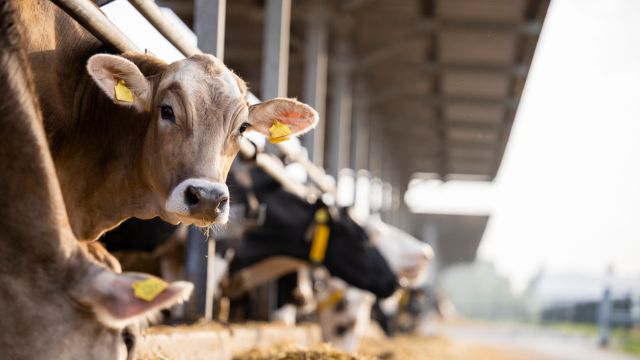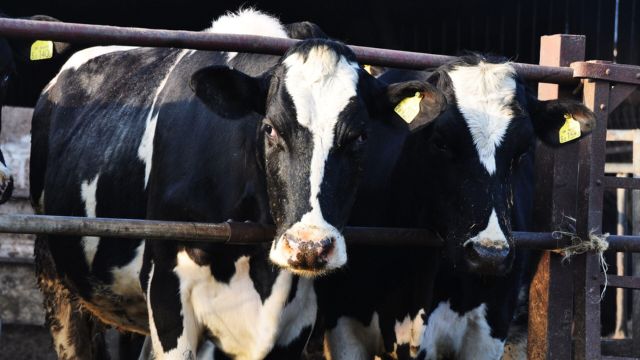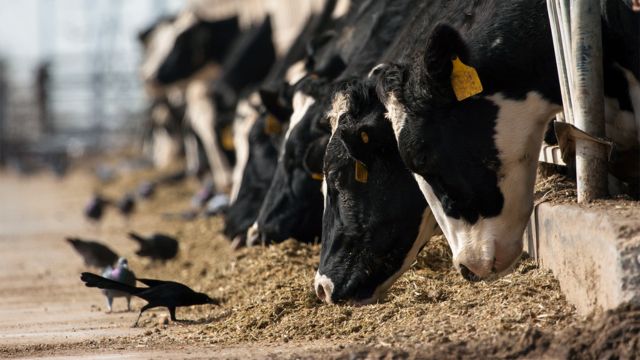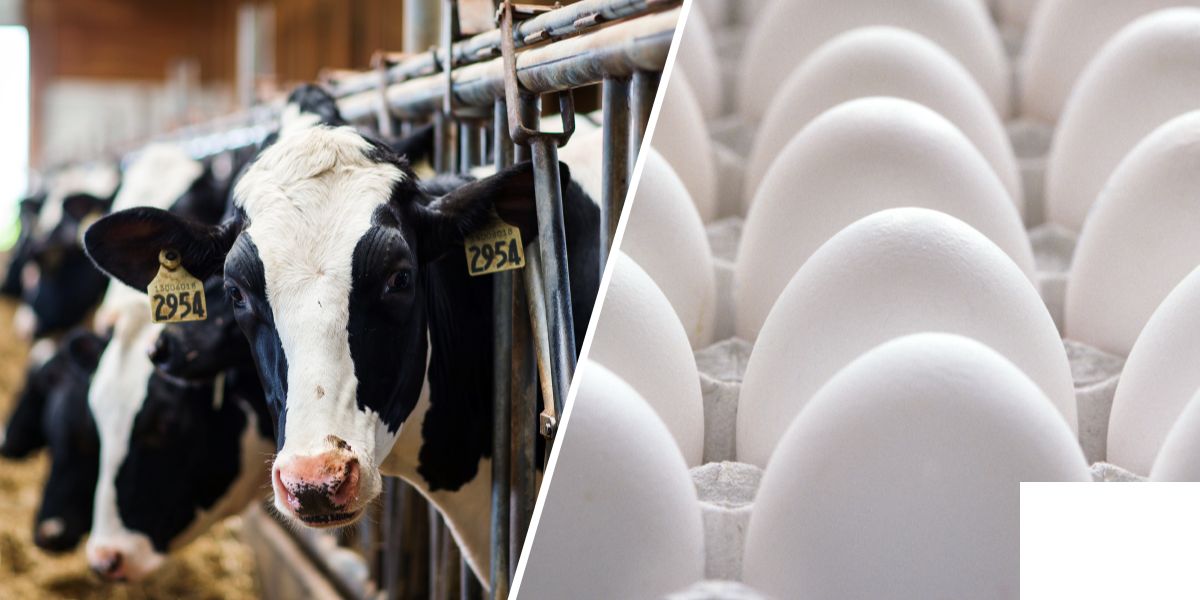Alert! Understanding Bird Flu: Impact on Poultry, Dairy Cows Versus Human Health
The Department of Agriculture has confirmed that dairy cows across the nation have contracted the H5N1 avian flu virus, which has caused headlines to go viral. of a May 1 Council on Foreign Relations event, Nirav Shah, principal deputy director of the Centers for Disease Control and Prevention, announced that tests have found the virus in cattle in nine states, primarily in Texas and New Mexico, and most recently in Colorado.
H5N1 has infected a variety of different animals as well as at least one person in Texas.
However, if the virus were to transmit effectively from person to person, that is what scientists are most afraid about. That hasn’t occurred and probably won’t. According to Shah, the H5N1 virus poses “a low risk to the general public at this time” according to the CDC.
Since viruses change frequently, outbreaks might also.

“This is spreading as quickly as a bullet train, as is the case with any significant outbreak,” Shah stated. “We’ll be discussing a brief glimpse of that swiftly approaching train.” He’s saying that there’s no question that our current understanding of the H5N1 bird flu will evolve.
KFF Health News discusses what you need to know right now in light of that.
Who Is Susceptible To Bird Flu?
primarily birds. But during the past few years, animals all over the world have been exposed to an increasing amount of the H5N1 avian flu virus. At a zoo in the United Kingdom, the expanding roster of over 50 species includes seals, goats, skunks, cats, and wild bush dogs. In South America last year, H5N1 avian flu outbreaks claimed the lives of at least 24,000 sea lions.
SEE MORE – Alert! Rare Virus Spreading In Massachusetts Poses Deadly Threat
The present cattle outbreak is unique in that it is spreading quickly from cow to cow, whereas the other cases—aside from the infections caused by sea lions—seem to be isolated. Because the genetic sequences of the H5N1 viruses isolated from cattle this year were almost exact duplicates, researchers are aware of this.
The fact that the nation has been taken off guard by the cattle outbreak makes it much more worrying. According to researchers looking at the virus’s genomes, the virus first infected cows in Texas late last year after spreading from birds to cattle. Since then, it has infected far more cows than have been tested.
Evolutionary biologist Michael Worobey of the University of Arizona in Tucson stated, “Our analyses show this has been circulating in cows for about four months, under our noses.”
Is the Next Epidemic Just Getting Underway?
Not quite yet. However, given how horrible a bird flu pandemic would be, it’s a notion worth having. Between 2003 and 2016, over half of those infected with the H5N1 avian flu virus died. The H5N1 strain that is presently circulating in livestock may result in lower fatality rates, but there could still be a backlog of sick patients and hospitals unable to handle additional medical emergencies.

Even though at least one person has contracted H5N1 this year, the virus cannot, in its current form, cause a pandemic. A pathogen has to infect a large number of humans over several continents to reach that terrible level.
And the H5N1 virus would need to infect a great deal of individuals to accomplish that. That will not occur from sporadic human-to-farm animal virus transmission. Instead, the virus needs to undergo modifications to travel from person to person. This is because, similar to the seasonal flu, it is a respiratory infection that is mostly conveyed through the air when individuals breathe, sneeze, and cough. As the depths of COVID-19 taught us, airborne infections are difficult to eradicate.
That has not yet occurred. Nonetheless, when H5N1 viruses proliferate throughout thousands of cows, they now have an abundance of opportunities to mutate. They replicate as other viruses do, and alterations that increase the virus’s chances of survival are passed on to the following generation. Furthermore, since cows are mammals, the viruses may be becoming more adept at growing in cells that resemble ours rather than those of birds.
A kind of superpower shared by many viruses may have contributed to the creation of a bird flu virus capable of causing a pandemic. Specifically, through a process known as reassortment, they occasionally exchange genes with different strains.
In a 2009 study, Worobey and colleagues linked the H1N1 “swine flu” pandemic to instances where several viruses that cause the swine flu, avian flu, and human flu mingled and matched their genes within pigs that they were infecting concurrently. Worobey cautioned that pigs would not be required this time around.
Will Drinking Milk Tainted With Viruses Cause a Pandemic to Break Out?
Not quite yet. Since all commercial milk must be pasteurized by law, cow’s milk, powdered milk, and baby formula sold in supermarkets are all regarded as safe options. When milk is heated to high temperatures, bacteria, viruses, and other microscopic creatures are destroyed. Tests have found H5N1 virus fragments in milk from supermarkets, but they also show that the viral bits are dead and safe.

However, it has been demonstrated that unpasteurized “raw” milk contains live H5N1 viruses; for this reason, the FDA and other health authorities strongly advise against drinking it. A person could get extremely sick or worse if they do this. Even still, it is doubtful that a pandemic will start since the virus, in its current form, does not transmit as quickly as the seasonal flu does from person to person.
What Action Is Appropriate?
Many thanks! The H5N1 bird flu has been able to infect cattle without the attention of the U.S. Department of Agriculture and other authorities due to a lack of surveillance. The USDA recently mandated that all lactating dairy cows be tested before their farmers moved them to other states and that the results of those tests be reported, to gain control over the situation.
SEE MORE – Public Health Alert: Avian Flu Virus Fragments Found in U.S. Milk Supply
But testing only cows that cross state boundaries would miss a lot of instances, just as limiting COVID tests to foreign passengers in the early months of 2020 allowed the coronavirus to proliferate unnoticed.
Such scant testing will not provide the information that farmers sorely need to stop the virus from spreading among cattle: how it is doing so. One popular theory holds that the equipment used to milk the cows is how viruses are spread from one cow to the next.
Fred Gingrich, executive director of the American Association of Bovine Practitioners, a nonprofit association for farm veterinarians, suggested that the government provide financial support to cow producers who report instances to encourage them to get tested. If not, he claimed, reporting merely exacerbates the financial loss by harming someone’s reputation.
According to Gingrich, “These outbreaks have a significant economic impact.” “Animals stop eating, produce less milk, and some of that milk is abnormal and cannot be sold, so farmers lose about 20% of their milk production during an outbreak.”
Gingrich said that although the government has provided farmers with free H5N1 testing, they have not allocated funds for vets, who are required to collect cow samples, transport samples, and submit paperwork.
“The least expensive part is the test,” he stated.
Evolutionary virologists can still learn a great deal by examining the genomic sequences of H5N1 viruses taken from cattle, even if testing on farms is still a pipe dream. Sequence differences provide information on the origins and timing of the present outbreak, its trajectory, and whether the viruses are evolving into ones that could be dangerous to humans. However, Worobey noted that the USDA’s tardy and inadequate release of genetic data has impeded this crucial research.
As H5N1 outbreaks kill a lot of birds and are always a threat to spread, the government should assist poultry farmers in preventing them, according to Maurice Pitesky, an expert in avian diseases at the University of California-Davis.
On poultry farms, waterfowl, such as ducks and geese, are typically the origin of outbreaks. Researchers can identify their proximity to these animals using remote sensing and other technologies. Farmers might focus their work by identifying specific areas where there may be spillover. This may entail moving farm animals temporarily inside barns, employing water cannons to drive away migrating flocks, or doing routine surveillance to find early indications of illnesses in chickens. Pitesky declared, “We should be investing in prevention.”
Although There Isn’t a Pandemic, What Might Happen to Individuals Who Contract the H5n1 Bird Flu This Year?
Nobody knows. This year, the condition has only been identified in one Texas patient, who was diagnosed in April. This individual had a moderate case of an eye infection and worked closely with dairy cows. The CDC’s surveillance program led to the discovery of this information. When doctors utilize tests that broadly detect influenza viruses to diagnose farmworkers with the flu, they are required to notify state health officials. Following confirmation of the test by state health departments, if the results are positive, a sample of the patient is sent to a CDC laboratory to be specifically examined for the H5N1 virus. “We have received 23 so far,” Shah stated. “Everyone but that one was in the negative.”
He claimed that approximately 150 persons who have spent time near cattle are also being watched by state health department personnel. Through phone calls, texts, or in-person visits, they are keeping an eye on these farmworkers to see if any symptoms appear. And they will be put to the test if that occurs.
SEE MORE – Health Update: Flu Season Fades, CDC Confirms Vaccine Effectiveness
Testing blood for antibodies against the H5N1 avian flu virus is another method of evaluating farmworkers; a positive result would suggest they may have unintentionally contracted the virus. Shah countered that this work is not yet being done by health professionals.
“It’s not encouraging that after four months we still haven’t done this,” Worobey remarked. “A pandemic is not something that worries me too much right now, but we should start acting as though it doesn’t want to happen.”
One of KFF’s main operating programs is KFF Health News, a nationwide newsroom that specializes in in-depth reporting on health-related topics and serves as an independent source for journalism, polling, and research on health policy.











